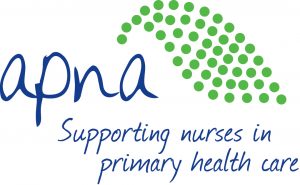
Helicobacter Pylori
Thomas Schulz, Margaret Kay, Sarah Cherian
Recommendations
- Routine screening for Helicobacter pylori (H. pylori) infection is not recommended (EBR – C3).167
- Screening with either stool antigen or breath test is recommended in adults from high-risk groups. High-risk groups include those with a family history of gastric cancer168,169 (EBR 1a, B), or, symptoms and signs of peptic ulcer disease, or dyspepsia (for both adults and children) (EBR 1b, A).167
- Patients with H. pylori infection and dyspepsia who are aged over 50 years, or who have anorexia, weight loss, dysphagia, vomiting, GI bleeding or an abdominal mass could be considered for further assessment, including endoscopy irrespective of H. pylori status.
- Treat as per Australian Therapeutic Guidelines Gastrointestinal.30
- Follow up at least 4 weeks after treatment with repeat diagnostic test.
- Patients with unsuccessful first line therapy need referral to a specialist to access second line medications.
Overview
Approximately half of the world’s population is infected with H. pylori.170 The prevalence of H. pylori in studies in lower and middle income countries ranges from 40–100%; however, substantial heterogeneity exists within ethnic and socioeconomic groups.170,171 H. pylori infection is usually acquired in early childhood and prevalence increases with age.170 Transmission is thought to occur from person-to-person, presumably via the oral-oral and/or faecal-oral routes.172 Risk factors for infection include increasing age, family infection status, ethnicity, geographical prevalence and socioeconomic conditions (including poverty and overcrowding).173,174 Colonisation persists for decades and is potentially life-long, leading to chronic gastrointestinal inflammation, peptic ulcer disease and gastrointestinal malignancy.
Based on seroprevalence surveys, infection rates in adults are as high as 52–94% in populations in developing countries,175 compared to 30–40% in Caucasian Australians.176,177 Infection rates are higher in both rural and urban Indigenous populations.178
People from refugee-like backgrounds and immigrants settling in Western countries often have high rates of H. pylori infection (72–93%)179,180 compared to the local population.179 In Canada, being born overseas and migrating after 20 years of age were both shown to be risk factors for H. pylori infection.181 In one study more than 80% of African children from refugee backgrounds had positive stool antigen tests on arrival in Australia,180 reflecting the high prevalence of infection in countries of origin and transit.
H. pylori is a major aetiological agent in the development of gastric cancer.170 Eradication of H. pylori has been shown to reduce progression to precancerous changes in the stomach182 and to reduce the risk of developing gastric cancer by approximately one third.183 H. pylori is also associated with peptic ulceration and dyspepsia.
Currently, neither H. pylori nor gastric cancer screening are recommended for people who are asymptomatic. Most guidelines recommend testing based on symptoms.184–186 It is, however, recognised that detection based on symptoms will miss a significant burden of H. pylori infection179 and gastric cancer.187 The refugee population is very diverse and the risk of subsequent gastric cancer development is poorly defined. A strategy of screening all arrivals is not currently recommended due to increasing rates of antibiotic resistance and reduced efficacy of first line treatment.188
Eradication of H. pylori may also have potential negative health effects.189
The significance of paediatric H. pylori infection and its relationship to gastrointestinal symptoms, extra-gastrointestinal manifestations and subsequent risk of malignancy in adulthood remain controversial.190
Investigations
There are a number of testing modalities for the detection of H. pylori. Stool antigen testing is relatively inexpensive,191 and monoclonal enzyme immunoassay (EIA) testing has a sensitivity of 94% and specificity of 97%.192 It is also convenient, as stool collection may be required to assess for parasitic infections or other conditions.193
Breath testing is a rapid, non-invasive test with a high sensitivity (95%) and specificity (98%),194 but is more expensive (Medicare benefit 66900 $66),191 difficult in young children, and may not be readily available.
Serology while cheap and widely available has a sensitivity of 92%, and a specificity of only 83%, depending on the test kit used.195 Antibody levels decline slowly after eradication of H. pylori infection. A positive serology result may reflect past rather than current infection and serology is therefore not recommended as screening for current H. pylori.168
Gastroscopy with biopsy and culture remains the gold standard for H. pylori and related disease detection as it allows direct visualisation of the stomach and duodenal mucosa, and provides an opportunity to obtain biopsies for pathological examination as well as H. pylori culture and susceptibility testing.184 It is however costly, has procedural risks for the patient, and is logistically challenging, especially for patients being managed in a primary health setting.
For most patients either a breath test or stool antigen test will be suitable and either of these tests should also be used to demonstrate effective eradication post therapy.
For accurate breath test and stool antigen results, adults and children need to cease antibiotics 4 weeks, and proton pump inhibitors (PPIs) 2 weeks, prior to the test.196
In adults aged less than 50 years with dyspepsia and no ‘red flag’ symptoms (anorexia, weight loss, dysphagia, vomiting, gastrointestinal bleeding or abdominal mass), a reasonable approach would be to perform a non-invasive test for H. pylori infection (e.g. breath test or stool antigen), and if positive offer treatment for H. pylori infection. The choice of test will depend on factors such as availability, expense, and convenience and age. This ‘test and treat’ approach is recommended in several consensus guidelines.167,168,186 People with ‘red flag’ symptoms or those over 50 years old should be referred to a specialist.
Management and Referral
Current Australian guidelines recommend a seven-day course of acid suppression therapy with either a proton pump inhibitor (PPI), combined with amoxicillin (pregnancy category A) and clarithromycin (pregnancy category B3) (see table 9.1).149 Longer courses of treatment (14 days) are recommended in children.
For patients with beta-lactam hypersensitivity, metronidazole (pregnancy category B2) is suggested as an alternative to amoxicillin. The importance of adherence to the relatively complex dosing schedule and completing the full course of treatment should be explained carefully to the patient with the help of an interpreter as needed. Use Easidose and teach-back to aid understanding of treatment.
| Table 9.1: Treatment of H.pylori76 | ||
| First line treatmenta | Drug therapy | Duration |
| Adults | Proton pump inhibitor (PPI)b
PLUS Clarithromycin 500mg twice daily PLUS Amoxicillin 1g twice daily Note: in those with penicillin allergy, amoxicillin should be replaced with metronidazole 400mg twice daily |
7 days |
| Children | (1) Esomeprazole 0.4-0.8mg/kg (max 200mg) orally twice daily for 14 days (disperse granules in water)
or Lansoprazole 1.5mg/kg (max 30mg) orally twice daily for 7 days (rapid dispersible tablets = place on tongue or swallow whole) or Pantoprazole 1mg/kg (max 40mg) orally twice daily for 7 days (mix granules with apple sauce or small amount of water/orange juice) PLUS (2) Clarithromycin 7.5mg/kg (max 500mg) twice daily orally for 7 days PLUS (3) Amoxicillin 25mg/kg (max 1g) orally twice daily for 7 days Note: use metronidazole if penicillin hypersensitivity7.5-10mg/kg (max 400mg) twice daily for 7 days |
14 days |
a. Single-prescription ‘combination packs’ available in Australia as esomeprazole/amoxicillin/clarithromycin (Nexium HP7®).
b. Options include: omeprazole, esomeprazole, rabeprazole (all 20mg twice daily) lansoprazole (30mg twice daily), or pantoprazole (40mg twice daily).
Follow-up
Treatment of H. pylori infection usually results in eradication of the organism and healing of peptic ulcer disease in the majority of patients in clinical trials.197 However, response rates in non-trial settings may be considerably lower than this due to a range of factors, including increasing antimicrobial resistance.188 Therefore, all patients treated with H. pylori eradication therapy should have follow-up testing with stool or breath test to ensure eradication has been successful.168
In patients with endoscopically documented peptic ulcer disease or a documented history of complicated ulcer disease, non-invasive testing (breath test or stool antigen test) should be performed at least four weeks after completion of therapy to determine the efficacy of H. pylori eradication therapy. This allows documentation of treatment response and determination of the risk of recurrence.167
The persistence of dyspeptic symptoms after H. pylori eradication therapy does not always correlate with treatment failure. If symptoms persist for several months despite documented eradication of H. pylori infection, endoscopy should be considered and other diagnoses sought.
If one treatment course is unsuccessful in eradicating H. pylori then first check compliance with the prescribed medication. If the patient has taken the treatment course as directed then second line therapies should be recommended.
Second line combination therapies include at least one medication that will require special access prescribing and therefore a specialist referral is necessary. Suggested combination therapies include 10 day triple therapy with PI/amoxicillin/levofloxacin, PPI/amoxicillin/rifabutin, or 7–14 day quadruple therapy with PPI/bismuth/tetracycline/metronidazole.149 Failure of second line therapy requires consideration of endoscopy and antibiotic sensitivity testing.
Considerations for Children
Children share many of the adult risk factors for H. pylori acquisition and the prevalence of active H. pylori infection in this group is high.175,198 The association between H. pylori infection and gastrointestinal symptoms in childhood is unclear, and routine screening of all refugee children is not justified or recommended.185,199–201 Children with chronic abdominal pain or anorexia should have other common causes of their symptoms considered in addition to H. pylori infection. These include somatic manifestations of post-traumatic stress disorder, constipation, unfamiliarity with food, and other infections, including tuberculosis, helminths (e.g.schistosomiasis) and malaria as well as other causes of recurrent abdominal pain of childhood.167
H. pylori infection is more reliably associated with iron deficiency in children than adults.199 In a child with persistent iron deficiency (where other common causes have been excluded and/or appropriately managed), H. pylori infection should be sought and treated if present.182,185
The diagnosis of active H. pylori infection in children is challenging, and the issues are often compounded in recently arrived refugees. Urea breath testing is often impractical or difficult to access;200 however, stool antigen testing using ELISA has excellent sensitivity and specificity in children202,203 and is now the current diagnostic method of choice. H. pylori serology should not be used for screening or for assessment of H. pylori eradication in children.
Endoscopy under general anaesthesia needs to be considered in any child with ‘red flag symptoms’ as per adult recommendations; however the incidence of peptic ulcer disease is lower in children.
Treatment of children with H. pylori infection is similar to that of adults, with amoxicillin, clarithromycin and a proton-pump inhibitor given for 14 days in weight-based schedules.185,200 Metronidazole is often not well tolerated by children and resistance may occur. Repeat testing to document eradication of H. pylori infection is generally indicated using non-invasive methods.185 Referral to a paediatric gastroenterologist is warranted if there are persistent symptoms following a trial of H. pylori eradication or development of concerning symptoms (e.g. weight loss, haematemesis or melena, refractory iron deficiency).
Screening and treatment in children to prevent long-term consequences of H. pylori is not recommended, in part due to high rates of re-infection, particularly in the very young.204 Family eradication treatment (where a paediatric index case is identified) is also not routinely recommended, but can be considered if re-infection occurs.
Considerations in Pregnancy and Breastfeeding
It is preferable to defer treatment of H. pylori until the completion of pregnancy. Esomeprazole is category B3; however, omeprazole (also B3) is preferred because of more safety data. Amoxycillin (category A), metronidazole (category B2), and clarithromycin (category B3) are considered safe to use if needed (see definitions of the Australian categories for prescribing medicines in pregnancy).
If symptoms are problematic then treatment with a combination of amoxycillin, clarithromycin and omeprazole is reasonable. This is the standard combination pack however replacing the esomeprazole with omeprazole at the same doses.
Esomeprazole, omeprazole are compatible with breastfeeding. Amoxycillin and clarithromycin are considered compatible with breastfeeding but may cause diarrhoea in the infant.




